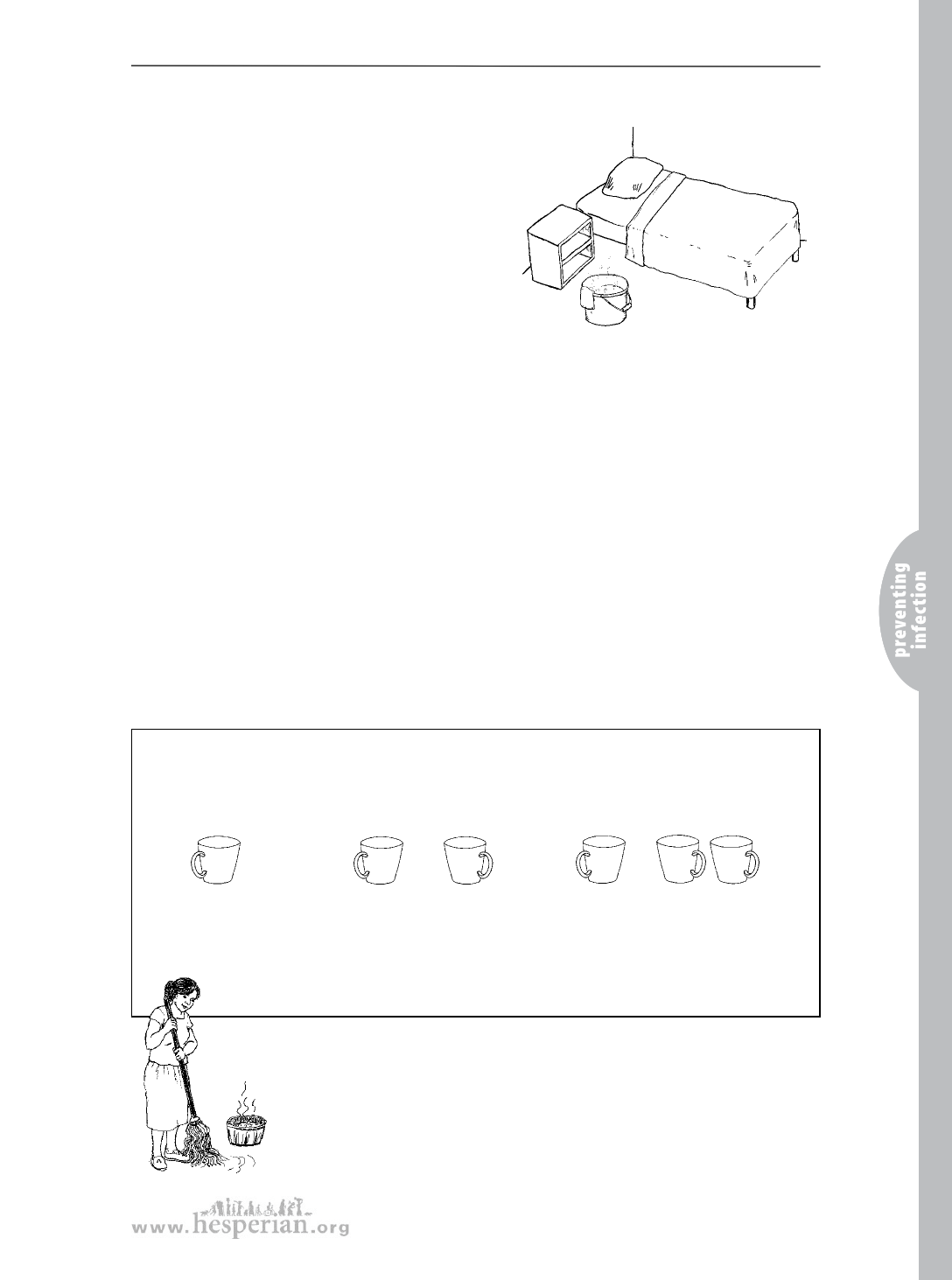
Clean the space and bedding
Clean the space and bedding
Clean the space
At home
One reason that birth or medical procedures
can happen as safely in a woman’s home as
in a medical center is that there are not as
many germs in a clean house as in a hospital.
But the home should still be cleaned carefully —
especially the area where the baby will be born or where procedures such as a pelvic
exam or IUD insertion will be done.
Sweep these areas free of dust and dirt, and wash surfaces with soap and water.
Put your tools or birth kit on a clean surface.
Move animals out of the house and do not do any medical procedures in places
where animals sleep or pass stool, or where people urinate or pass stool. If the floor
in the house is made of animal waste (dung), do not let the woman’s body or any
of your tools touch the floor. Dung has many germs in it that can easily spread to
pregnant women. You can cover the floor with clean straw, cloth, or plastic.
In a hospital, maternity center, or clinic
Be extra careful. Germs can easily be passed from one person to another.
After each birth, wash floors and surfaces. If possible, use a bleach
(sodium hypochlorite) solution to wash the floor.
How to make a disinfecting solution of 5% bleach
If your bleach says:
5% available chlorine 10% available chlorine
15% available chlorine
use undiluted,
straight bleach
use 1 part and 1 part
bleach
water
use 1 part and 2 parts
bleach
water
Mix just enough solution for 1 day. Do not use it again the next day.
It will not be strong enough to kill germs anymore.
If you do not have bleach, you can wash the floor with:
• ethanol (medical alcohol) 70%
• isopropyl alcohol 70%
• hydrogen peroxide 6%
• soapy water
• ammonia
(But do not ever mix
bleach with ammonia
— when mixed they
make a poison.)
A Book for Midwives (2010)
57